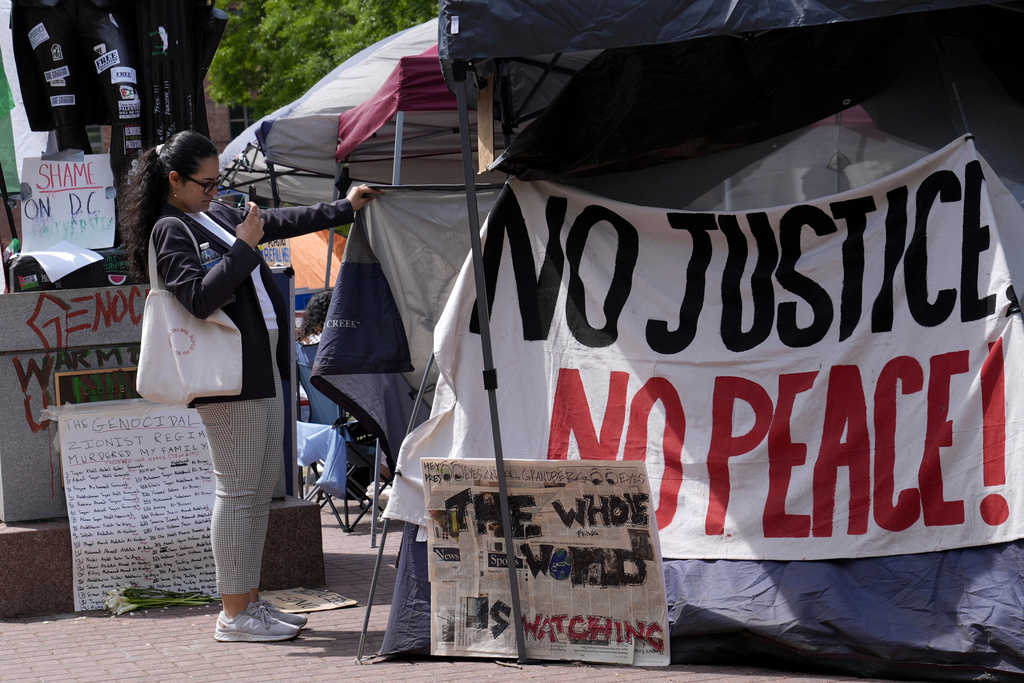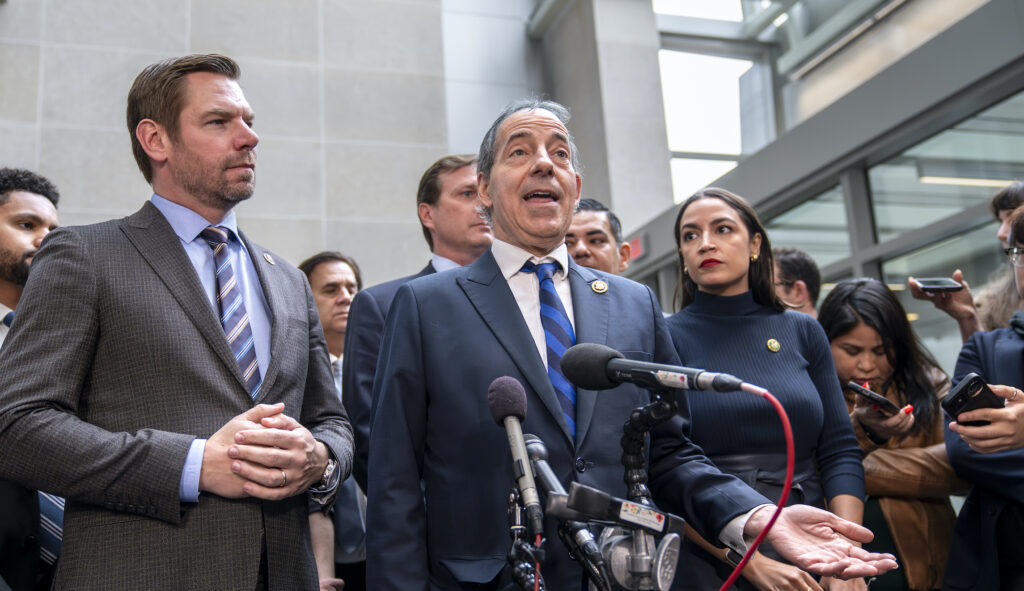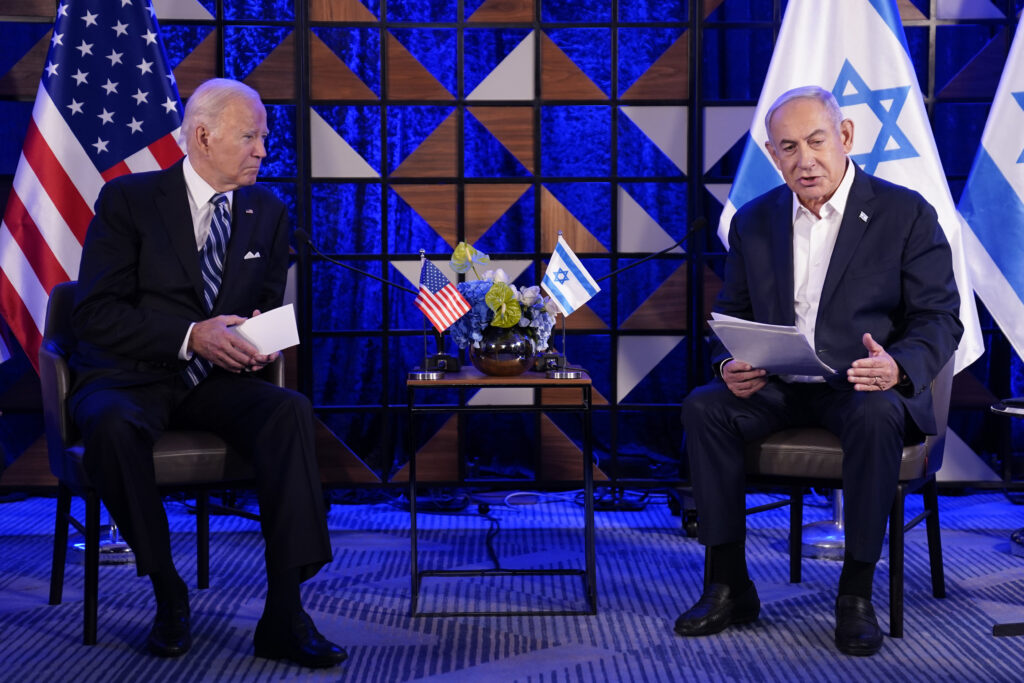America’s Top 11 Generals: #2 Douglas MacArthur
The Legendary General Douglas MacArthur: A Master Strategist and Leader
Over the years, the United States has produced many remarkable generals and admirals, but only a few have stood out as world-class strategists and leaders of troops. As Veterans Day approaches on November 11, let’s remember and celebrate them. Here is my list of America’s finest 11 commanders.
Douglas MacArthur, 1880 – 1964 (World War I, World War II, Korea)
Mercurial, paranoid, and petty, yet brilliant, and visionary, his was a personality that loomed large in a time filled with big personalities. But for all his arrogance, swagger, and showmanship, with his trademark corncob pipe, gaudily braided cap, and dark sunglasses, MacArthur was adroit at producing victories.
Archive Photos/Getty Images
Although he earned the pejorative nickname “Dugout Doug” in 1942 while under Japanese siege in the Philippines, his personal bravery was beyond reproach. Indeed, he exposed himself to so much enemy fire over his career it is a wonder he was never nicked, let alone killed outright. But he mystically believed that no bullet was made for him. And thus, he casually walked battlefields, even as GIs were prone on the ground, with no fear. “Excuse me, General,” said a flummoxed lieutenant on the front line at Los Negros when MacArthur approached, “we killed a Jap sniper there just a few minutes ago.” MacArthur replied, “Fine. That’s the best thing to do with them.” And then he continued walking the line.
General Douglas MacArthur and his acting aide Colonel Lloyd Lehrabas inspect the results of the naval bombardment, Los Negros Island, Admiralty Islands, Papua New Guinea, February 29, 1944. (Photo by US Army Signal Corps/Interim Archives/Getty Images)
Having led the Rainbow Division during World War I, MacArthur was horrified by the carnage of trench warfare. He vowed if ever in a position to lead armies, he’d never commit the mass frontal assaults of Haig, Pétain and Ludendorff. And he fully grasped as few generals did how the advent of technology, particularly the airplane, would revolutionize war and allow him to avoid the butchery of the Somme and Flanders.
1920: General Douglas MacArthur (1880 – 1964) Commandant of the West Point Military Academy with the Prince of Wales (1894 – 1972) later the Duke of Windsor, who was inspecting the cadets. (Photo by Hulton Archive/Getty Images)
Indeed, what made MacArthur so unique was his ability to adapt new ideas. “New conditions and new weapons require new and imaginative methods,” he said. “Wars are never won in the past.” Although he reluctantly sat on the 1925 court-martial of aviation pioneer Billy Mitchell, he later came to embrace the maverick flier’s belief in offensive use of air power to its fullest. At West Point, where he earned the second-highest scores in school history, he’d learned that bodies of water were obstacles behind which to dig in, whereas Naval midshipmen were taught that the seas were highways for flexibility and maneuver; the Army brat came down hard on the side of the admirals.
Until his grand strategy could be implemented, however, his US-Aussie forces had to take heavily fortified Buna on New Guinea’s jungle-covered northern coast. The battle was slow, bloody, and brutal, with ground losses higher than at Guadalcanal raging at the same time. But when Buna fell in January 1943, MacArthur handed the Emperor’s troops their first defeat of the war.
circa 1943: General MacArthur … passing a line of Australian troops moving up to the front in the New Guinea jungle whilst he is on a tour of inspection. (Photo by Three Lions/Getty Images)
Once free of the jungle interior, MacArthur embarked on a stunning series of strategic advances through the Southwest Pacific. His string of unbroken successes were achieved through sweeping flank attacks and maneuver using the sea lanes as arteries to deposit troops to capture and hold airfields, which would then provide top cover for his next advance. “Victory,” he declared, “depends on the advancement of the bomber line.” Unlike Nimitz’s island-hopping campaigns in which direct pressure was applied to enemy garrisons such as at Tarawa, Saipan, and Iwo Jima, MacArthur practiced what he called “leap-frogging”.
When planning his advance up New Guinea to the Philippines, MacArthur’s staff worried about the losses they faced taking the many strongholds dotting the huge land mass’ northern coast as well as powerfully garrisoned islands like New Britain and the Admiralties. MacArthur, instead, informed them of his intention to, in his words, “Envelop them. Incapacitate them. Apply the hit-em-where-they-ain’t, let-em-die-on-the-vine philosophy. The jungle. Starvation. They are my allies.”
Portrait of General MacArthur and General Thomas Blamey, New Guinea, 1942 1943, Australian Department Of Information. Getty IMages.
This momentous strategy effectively led to MacArthur’s forces in 1943 bypassing heavily fortified Japanese strongholds on New Guinea, as well as the massive Japanese base at Rabaul on the tip of New Britain. Instead, such formidable positions would be cut off from supplies using his navy and air force to seal the traps. Once he’d established his forward air bases, captured and guarded by his infantry and artillery in one of his over 80 successful amphibious landings from 1943 to 1945, the side-stepped Japanese would be compelled to either march through some of the densest jungle terrain on earth for miles to attack his waiting men or retreat on escape routes left for them that led to nowhere.
General Douglas MacArthur (second from left) walks to the shore of Leyte Island with a group of U.S. Army and Philippine officers
Not only did MacArthur’s strategy mean the most efficient use of resources while U.S. strength in the Pacific grew with the nation’s industrial production, it kept casualty rolls relatively low. “The days of the frontal attack are over,” MacArthur declared. “Good commanders do not turn in heavy losses.” And while he talked bloody, his short casualty lists told a far different story. Indeed, although unpopular with his troops who distrusted his flamboyant persona, had they better understood how he was using them, their bitterness might have faded some.
For every GI, Digger or Marine killed, the General killed ten Japanese. ETO comparisons are worth noting. At Normandy alone Eisenhower suffered some 28,300 losses; Lucas lost a staggering 72,300 at Anzio. Yet, from the launch of his New Guinea campaign to landing on the Philippines two years later, MacArthur suffered a mere 27,500 losses. Hence a senior Japanese intelligence officer Juio Matsuichi would declare MacArthur’s maneuvers “the type of strategy we hated most … because it gained the most while losing the least.”
His operation to circumvent the enemy strongholds at Hansa Bay and Wewak on New Guinea to strike the Japanese at Hollandia — 400 miles up the coast, and 280 miles behind enemy lines — with little loss, is the classic example of this strategy in practice, as well as MacArthur’s willingness to take calculated risks, similar to his naval counterpart Nimitz. The Hollandia lunge was an incredibly daring operation for it first meant shedding Army air cover to rely solely on limited carrier support until his GIs secured the beachheads and engineers patched cratered runways.
Aerial view … of USAF attack on 5th April 1944 at Hollandia in Dutch New Guinea now Jayapura in the province of Papua, Indonesia. Official US Air Force Photo. (Photo by INP/Bettmann Archive/Getty Images)
The surprise, however, was complete. One MacArthur staff officer remembered: “When we landed at Hollandia, there were very few Japanese troops there, but there was a great deal of Japanese brass, admirals and generals, who had taken post up at Hollandia to get the reports from Hansa Bay, and how the imperial forces were going to massacre the Americans. Suddenly the Americans were on their front step!” Biographer William Manchester proposes the Hollandia lunge to be of comparable genius to Hannibal’s movements at Cannae and Napoleon’s at Austerlitz. Like many MacArthur masterpieces, however, it is also much less famous because the casualties were mostly on the enemy side.
A US Coast Guard manned landing craft, transporting supplies to Hollandia during World War Two, Dutch New Guinea, circa 1943-1945. (Photo by US Coast Guard/Getty Images)
Again and again throughout 1944, MacArthur’s unexpected and incisive blows, each landing closer and closer to the Philippines, would unnerve his Japanese opponents in Tokyo, Singapore, or Manila trying to discern his next move. But it did them little good. In a two-month period, for example, MacArthur’s forces advanced over 1,400 miles at the cost of a mere 1,400 casualties — one per every mile of ground. The very opposite of the Western Front slaughter he sought to avoid.
General Douglas MacArthur Military Funeral Procession, Washington, D.C., USA, photograph by Thomas J. O’Halloran, April 8, 1964. (Photo by: Universal History Archive/Universal Images Group via Getty Images)
In command of one of the most impressive amphibious forces ever assembled when he landed on Luzon in the Philippines in January 1945, MacArthur proceeded to completely baffle and out-maneuver the Japanese general Yamashita, catching the enemy columns in motion, demonstrating that when it came to dodge, parry, and thrust, MacArthur was a master. By September 1945 the Supreme Commander Allied Powers in the Pacific (SCAP) was receiving the Japanese surrender, having advanced over three thousand miles from Port Moresby to Tokyo Bay, wherein he laid out a positive and magnanimous vision of the future for the defeated Japan that stunned the Emperor’s delegates in its magnanimity.
After the war, MacArthur became the de facto U.S. pro consul of Japan. In a remarkable demonstration of benevolent statesmanship towards a once brutal foe, MacArthur embarked on a brilliant post-war reconstruction and liberalization of devastated Japan. Much of the success that has been post-war Japan is owed to SCAP’s six-year rule. In fact, no enemy has been so defeated and yet so rehabilitated in so short a time.
circa 1945: American soldier General MacArthur with Japanese Emperor Hirohito (1901 – 1989) at the United States Embassy in Tokyo. (Photo by Keystone/Getty Images)
His time in Tokyo between 1945-1951 should be the crowning achievement of MacArthur’s life. And yet, just when he thought his fighting days were over, the North Korean attack into the South in June 1950 gave him what he called “Mars’ last gift to an old warrior.” And here, the now seventy-year-old MacArthur’s vision and daring prevented a UN rout. After stabilizing the front around Pusan on the southern tip of the Korean peninsula, MacArthur then in a month’s time conceived and conducted one of the most daring and brilliant military operations in the history of warfare. He landed US Marines 110 miles behind the North Korean lines at Inchon, a port known for severe tides, an inlet that became daily mudflats, fortified islands, and high sea walls rather than proper beaches. In fact, as one naval officer put it, “Make a list of amphibious ‘don’ts’ and Inchon has them all.”
It was MacArthur’s choice of just such an unlikely location that made Operation Chromite a blinding success that sent the surprised and bewildered North Koreans retreating back across the 38th parallel into the north with the UN in pursuit. The victory would not last, however, as the massive Chinese counterattacks in November 1950 threw the UN back down south and left MacArther stunned and flailing for excuses. But there was plenty of blame to go around, both in his HQ in Tokyo and the White House and Pentagon who were all caught flatfooted. Still, his eventual sacking by Truman who was fed up with MacArthur’s public opposition to Washington’s war policy was a sad way to end a remarkable career.
View of US President Harry S Truman (1884 – 1972) and US military commander General Douglas MacArthur (1880 – 1964) on Wake Island in the pacific. Truman dismissed MacArthur from the Korean command a year later. (Photo by MPI/Getty Images)
Great commanders sometimes also make great mistakes. MacArthur was no exception to this rule. He inexcusably allowed his air force in the Philippines to be destroyed on the ground 12 hours after the Pearl Harbor attacks. He also failed to anticipate just how fierce the Japanese would defend Manila in 1945. He agonized as the city was razed and 100,000 innocent Filipinos were massacred by the 20,000 Japanese left behind to blow up the docks. (In one of his darkest moments, MacArthur later blamed Yamashita for the war crimes committed by those who mutinied and disobeyed his direct command to abandon the city intact; SCAP wrongly hanged him for it). And there was his widely separated positions of his Eighth Army and X Corps deep in frigid North Korea despite Beijing’s repeated warnings that an attack would materialize if they approached the Yalu.
And there is no doubt his paranoia and bottomless thirst for glory led to petty and even mendacious acts, as relayed in his self-serving communiques that often downplayed his losses, shined inordinate glory on himself, and seemed to belittle his Australian allies. Given his performance on the battlefield, this behavior was unnecessary and tarnished the very reputation he was trying to bolster.
But his many successes as a commander in World War I, World War II and the first months of The Korean War cannot be denied. And no American general better understood an enemy as he did the Japanese — and it showed in his results. John Gunther wrote: “MacArthur took more territory, with less loss of life, than any military commander since Darius the Great.”
* * *
America’s Top 11 Generals
RELATED: #10 Matthew Ridgway
RELATED: #9 Nathanael Greene
RELATED: #6 Admiral Chester Nimitz
RELATED: #5 Thomas ‘Stonewall’ Jackson
RELATED: #4 William T. Sherman
* * *
Brad Schaeffer is a commodities trader, columnist, and author of two acclaimed novels. His newest book, the fact-based LIFE IN THE PITS: My Time as a Trader on the Rough-and-Tumble Exchange Floors will be published in December and is currently available for pre-order. You can also find more of Brad’s articles on Substack.
The views expressed in this piece are those of the author and do not necessarily represent those of The Daily Wire.
Casualties. This stark contrast highlights the effectiveness of MacArthur’s strategy in minimizing losses while achieving strategic objectives.
What specific tactics did MacArthur employ to ensure the effectiveness of his strategy in minimizing casualties during warfare?
General Douglas MacArthur, known for his successful military leadership during World War II and the Korean War, employed several specific tactics to minimize casualties during warfare. These tactics aimed to maximize the effectiveness of his strategy while reducing unnecessary loss of life. Some of the tactics MacArthur employed include:
1. Amphibious Assault Operations: MacArthur developed and refined the strategy of conducting amphibious assaults, in which troops are transported by sea and landed on the enemy’s coastline. This approach allowed for careful planning and coordination, minimizing casualties by selecting suitable landing areas and timing the assaults to exploit the element of surprise.
2. Tactical Withdrawal: During the early stage of the Pacific War, MacArthur employed a “fighting withdrawal” strategy, retreating in the face of a superior enemy force to buy time, regroup, and reinforce his troops. This strategy required disciplined soldiers and careful coordination, helping to minimize casualties while maintaining the overall effectiveness of the Allied forces.
3. Combined Arms Approach: MacArthur emphasized the utilization of combined arms forces, which integrated infantry, armor, artillery, and air support. By combining the strengths of different units, MacArthur aimed to enhance efficiency and effectiveness while minimizing unnecessary risks and casualties.
4. Intelligence and Reconnaissance: MacArthur heavily relied on accurate intelligence and thorough reconnaissance to gather information about enemy positions, strengths, and weaknesses. This data allowed him to plan and execute precise attacks, reducing casualties by avoiding unnecessary confrontations and selecting advantageous targets.
5. Air and Naval Support: MacArthur recognized the importance of air and naval support in achieving battlefield superiority and reducing casualties. He coordinated closely with the air force and navy to provide continuous air cover, interdiction strikes, and naval bombardments, suppressing enemy resistance and minimizing the risk faced by ground troops.
6. Psychological Warfare: MacArthur employed psychological warfare tactics to disrupt enemy morale and reduce resistance. By broadcasting propaganda messages, conducting leaflet drops, and other psychological operations, he aimed to encourage enemy surrender or discourage aggression, ultimately leading to fewer casualties on both sides.
Overall, MacArthur’s tactics prioritized the safety of his troops while maintaining the effectiveness of his strategic goals. Through careful planning, efficient resource allocation, and precise execution, he aimed to minimize unnecessary casualties during warfare.
" Conservative News Daily does not always share or support the views and opinions expressed here; they are just those of the writer."





